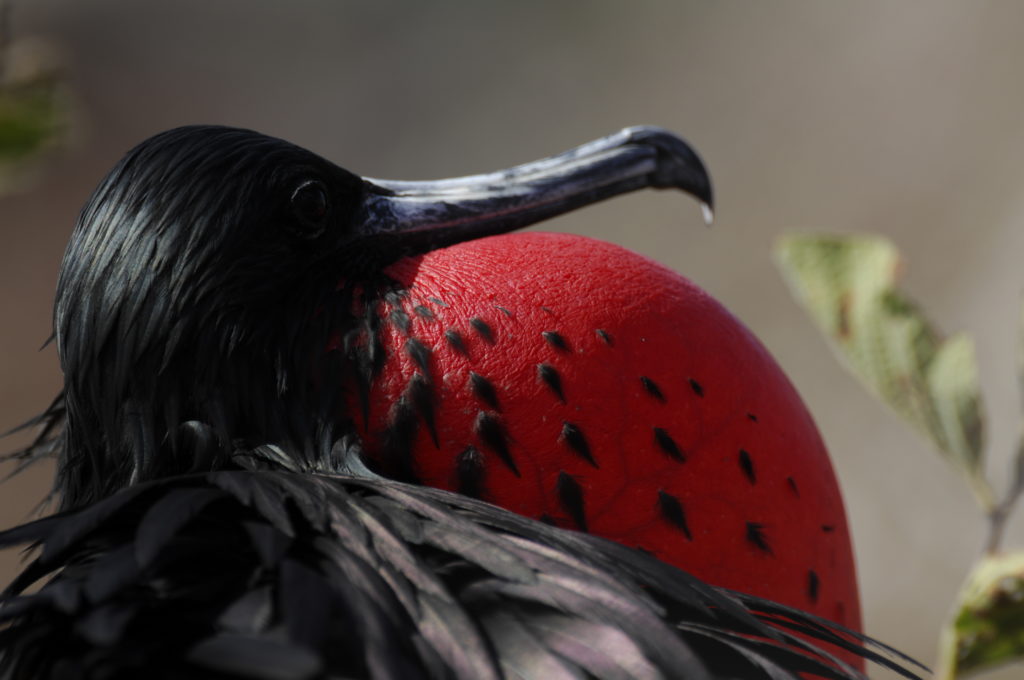
Day 1: Land Baltra Airport – Dragon hill & Santa Cruz Island
Day 2: Santa Cruz Island – Turtle Cove & Chinese Hat
Day 3: Genovesa Island – El Barranco & Darwin Bay
Day 4: Bartolome Island & Santiago Island
Day 5: Santa Cruz Island Trek & Drop off at Airport.
Day 1: Arrival
Upon arrival at Baltra Airport, visitors must go through an inspection in order to verify that no foreign plants or animals are being introduced to the islands. An entrance fee of $100 (unless it has been prepaid) must be paid to the Galapagos National Park. A representative will meet you right outside and help collect your luggage. You will then be escorted to your transport in Puerto Ayora Village. This site is located on the northwestern Santa Cruz Island and consists of a trail that leads to a hyper-saline lagoon behind the beach. It is frequented by flamingos, pintail ducks and other species of birds. This site has been re-populated with land iguanas from Seymour and Isabela islands.
Dinner and over night on board the boat.
Day 2: Black Turtle Cove & Chinese Hat
This little cove is located on the northern side of Santa Cruz island. It is a red mangrove lagoon which is very calm and quiet which makes an ideal place for a nursery for many sharks and rays. Its crystal waters allows you to observe large groups of white-tip reef, black tipped reef and hammerheads sharks as well as schools of golden and spotted eagle rays. There are no landing sites so the visit is done by panga or kayak. Sea turtles are frequently seen and sometimes they are seen mating in the mangrove-lined waters.
Your next stop is a small islet (1 sq km) located just on the southeastern tip of Santiago Island. It is a recent volcanic cone, shaped like a Chinese hat when seen from the northern side. This is an excellent visit for interpretations of the geological features such as lava tubes and lava flows. The landscape is covered with sea lions, marine iguanas and Galapagos penguins.
Dinner and over night on board.
Day 3: El Barranco and Darwin Bay
The visitor site of El Barranco is located on the southern part of Darwin Bay from Genovesa Island. The trail is on volcanic rock and is 1.5 km in length. It can take about 2 hours to walk it. The youngest area of the island from a geological point of view lies in this area. There is a cliff located on the southern section and is made up of very fragile lava.
The natural erosion, therefore, in the lava flows has become the ideal place for nesting Storm Petrels. You can see two species of petrels that nest in the holes of the lava. Interestingly one of its main predators is the short-eared owl which prey on the youngsters that may have wondered from their nests. The red-footed booby nests only in the outer islands of the archipelago, Punta Pitt, Gardner (Floreana), Wolf, Darwin and Genovesa. Also present on this island is the masked booby. During the “panga rides” along the cliffs, sea lions and several species of seabirds can also be seen.
Darwin bay has its origin where the crater of this island collapsed below sea level. The wet landing is on a beautiful white coral sandy beach. This is a favourite island for birdwatchers. The following species can be seen: red footed-booby, masked boobies, wandering tattlers, lava gulls, whimbrels, yellow-crowned, and black-crowned lava herons, and yellow warblers.
Continuing on the trail, visitors climb gradually to the edge of the cliff seeing Red-Foots nesting in the Mangrove trees below. Bird watching includes sightings of sharp-beaked finches, large cactus and ground finches, Galapagos doves, and swallow-tailed gulls. Reaching the end of the trail, at the cliff’s edge an incredible view of the island and the many birds living there can be observed.
Dinner and over night on board.
Day 4: Bartolome Island + Sullivan Bay
At Bartolome Island you will find Sullivan Bay. It has an altitude of 114 meters, with a tremendous view over the Archipelago. Volcanic cones, lunar-like craters, lava fields, and the famous Toba formed pinnacles eroded by the sea. There is very little vegetation on this island. It has two breathtaking beaches where marine turtles can be seen and at the base of the pinnacle a small colony of Galapagos penguins.
Santiago, also called James, or San Salvador Island, is located in the western central part of the Galapagos. It is the fourth largest island in the archipelago (following Isabela, Fernandina and Santa Cruz). Along with some of the large western volcanoes of Isabela and Fernandina, Santiago is also volcanically active, with many young flows and cones to be seen. A number of historic eruptions have been reported over the last 2 centuries. Santiago actually consists of two coalesced volcanoes: a typical shield volcano on the northwest end and a low, linear fissure volcano on the southeast end.
Dinner and overnight on board.
Day 5: Highlands, Santa Cruz Island
The trail to the highlands leaves from Bellavista and passes through the agricultural zone, near the National Park boundary. Then goes through the Fern and Sedge zone. With clear weather (unpredictable) this area affords beautiful scenes of rolling hills and extinct volcanic cones covered with grass and lush greenery all year round. After the morning excursion you will be taken to Baltra airport for your flight to the mainland.
Cost: Please enquire for an updated costing
Includes:
All transfers in Galapagos; Twin cabin accommodation with private facilities; All meals, Water, Coffee and Tea; All excursions as mentioned in the itinerary (itinerary subject to change) with English speaking naturalist guide; Snorkelling equipment, Kayak equipment.
Not included:
Anything not mentioned above.







The itinerary can be changed due to arrival day and departure days. Please enquire below or by clicking this text.